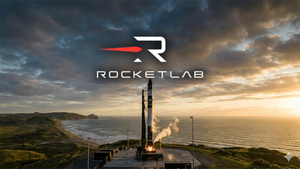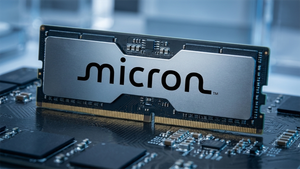
The cryptocurrency market is abuzz with a significant trend: institutional investors are rapidly accumulating Solana (SOL) tokens, positioning themselves ahead of an anticipated U.S. spot Solana Exchange-Traded Fund (ETF) approval. This strategic pre-positioning by "smart money" underscores a profound shift in how traditional finance views high-performance Layer 1 blockchains, validating Solana's technological prowess and its burgeoning ecosystem. This wave of institutional capital is not merely speculative; it signals a long-term belief in Solana's potential to become a cornerstone of the digital economy, promising enhanced liquidity, legitimacy, and potentially substantial price appreciation for SOL in the coming months and years.
Institutional Frenzy: Why Giants are Betting Big on Solana
A remarkable shift in institutional investment strategy is currently underway, with major players aggressively building their Solana holdings. This institutional embrace is a direct precursor to the expected U.S. spot Solana ETF approval, mirroring the capital inflows that preceded the greenlighting of Bitcoin and Ethereum ETFs.
Leading this charge are several prominent firms, each making substantial commitments:
- Forward Industries (NASDAQ: FORD): This Nasdaq-listed company has aggressively pivoted its strategy, acquiring and staking over 6.8 million SOL tokens, valued at approximately $1.58 billion. This makes Forward Industries the largest publicly listed corporate holder of Solana. Their initiative, backed by contributions from Galaxy Digital, Jump Crypto, and Multicoin Capital, aims to build and manage the world's largest Solana treasury and deploy corporate funds into Solana-based decentralized finance (DeFi) protocols, signaling a long-term commitment.
- Galaxy Digital: Led by Mike Novogratz, Galaxy Digital has embarked on a significant Solana buying spree, accumulating over $1.5 billion worth of SOL (approximately 6.5 million tokens) in a short period, including a single-day purchase of $306 million. Galaxy Digital also played a leading role in Forward Industries' $1.65 billion private placement. Novogratz has expressed strong optimism, characterizing the current period as the "season of Solana."
- Pantera Capital: The venture capital firm has committed $1.1 billion to Solana, making SOL its largest position in digital assets, surpassing even Bitcoin and Ethereum. Pantera's CEO, Dan Morehead, highlighted Solana's superior performance and efficiency, and the firm is also involved in the Helius Solana Treasury, supporting SOL as a reserve asset for public companies.
Beyond these examples, Solana treasuries have collectively accumulated nearly 9 million SOL, amounting to approximately $2 billion, since April 2025, representing 1.55% of Solana's total circulating supply. Overall, Solana-based corporate treasuries now exceed $4 billion, holding 17.11 million tokens, or nearly 3% of the total circulating supply, demonstrating widespread institutional confidence.
This robust accumulation is intricately linked to the growing anticipation of a U.S. spot Solana ETF. The pattern mirrors historical institutional interest preceding Bitcoin and Ethereum ETF approvals, with market observers viewing Solana as the next in line. Such an ETF would validate Solana's legitimacy, enhance accessibility for traditional investors, and is expected to unleash a "torrent of institutional capital," potentially boosting SOL's price by 30-50% in the immediate aftermath of approval.
A New Hierarchy: Winners and Losers in the Solana Surge
The institutional accumulation of Solana (SOL) and the impending approval of a U.S. spot Solana ETF are poised to dramatically redraw the lines of competition and opportunity within the cryptocurrency landscape, creating clear winners and challenging existing structures.
The most direct beneficiary is Solana (SOL) itself and its expansive ecosystem. Increased accessibility through an ETF will drive demand, boosting SOL's liquidity, legitimacy, and price. Projects built on Solana, from DeFi protocols to NFT marketplaces and gaming platforms, will experience enhanced visibility, user adoption, and developer interest. Solana's core strengths—speed, scalability, and low fees—make it particularly attractive for high-volume applications.
Publicly traded companies with existing Solana holdings or integrations are positioned for significant gains. Companies like Upexi, Inc. (OTC: UPXI), the largest known publicly traded holder with approximately 1.9 million SOL tokens, and DeFi Development Corp (OTC: DFDV), holding nearly 1.2 million SOL, stand to see their treasury values appreciate. Sharps Technology (NASDAQ: STSS), which committed $400 million to a Solana digital asset treasury and partnered with Pudgy Penguins, exemplifies how traditional companies are leveraging Solana. Firms like SOL Strategies Inc. (NASDAQ: HODL), a Solana-focused digital asset treasury company, are also direct beneficiaries. Asset managers like Franklin Templeton and Apollo Global Management are already integrating Solana into their offerings, launching tokenized credit funds and expanding money market funds on the Solana blockchain, signifying new revenue streams for traditional finance.
On the other side, several entities may face challenges. Competing Layer 1 blockchains, particularly those without a clear path to institutional products or struggling with adoption, will feel intensified pressure. While Ethereum has its own spot ETF, Solana's advantages in transaction speed and lower fees could siphon off market share in niches like decentralized gaming and high-frequency DeFi trading, pushing Ethereum's Layer-2 solutions to accelerate their optimization. Cryptocurrency exchanges facilitating direct SOL purchases might see some trading volume shift towards regulated ETF products. Regulatory bodies, while not financial "losers," will face increased scrutiny regarding consumer protection and market manipulation as new crypto investment products emerge. The FTX Estate, which holds a substantial amount of SOL (over 7.1 million SOL), represents a potential drag on price, as any large-scale liquidation could create selling pressure.
Mainstreaming Digital Assets: Broader Industry Implications
The institutional embrace of Solana and the anticipated ETF approval mark a profound maturation of the cryptocurrency market, aligning with broader trends of mainstream adoption and regulatory integration. This development extends far beyond Solana, signaling a new era for digital assets within traditional finance.
This trend mirrors the journey of Bitcoin and Ethereum ETFs, which paved the way for institutional capital. With Solana, the market is witnessing the continued legitimization of cryptocurrencies as viable, investable asset classes. This is not just about a new product; it’s about a deepening trust in the underlying technology and the regulatory frameworks being built around it. The U.S. Securities and Exchange Commission (SEC) has shown a consistent, albeit cautious, approach, with delays on several spot Solana ETF applications from issuers like Franklin Templeton, Bitwise, and 21Shares. However, these delays are characteristic of the regulatory process and often precede approval, as evidenced by the successful launch of a Solana staking ETF in July 2025 and Canada's existing spot and staking Solana ETFs.
The ripple effects on competitors are significant. Other Layer 1 blockchains like Cardano (ADA), Avalanche (AVAX), and Polkadot (DOT) will face increased pressure to demonstrate their institutional appeal and regulatory compliance. Solana's high transaction speed and lower fees present a direct competitive threat, pushing rivals to innovate further in scalability and user experience. For partners within the Solana ecosystem—from infrastructure providers to dApp developers—the ETF could unlock unprecedented growth, attracting more users and capital to the network. Traditional financial institutions that offer custody or wealth management services for Solana ETFs will find new revenue streams, further intertwining crypto with legacy finance.
This institutional push will also intensify regulatory scrutiny globally, particularly concerning Solana's classification as a potential security and its decentralization, especially given its comparative reliance on a smaller number of validators. However, the consistent framework emerging from Bitcoin and Ethereum ETF approvals suggests a path forward, emphasizing market surveillance, investor protection, and clear guidelines for digital asset products.
The Horizon: What Comes Next for Solana?
The path ahead for Solana is illuminated by a confluence of powerful forces: sustained institutional interest, the imminent prospect of a U.S. spot ETF, and groundbreaking technological advancements like the Alpenglow consensus upgrade. These factors collectively paint a robustly bullish picture for SOL's future, promising both short-term catalysts and long-term foundational growth.
In the short term, the approval of a U.S. spot Solana ETF, widely anticipated for late 2025, is expected to trigger an immediate and substantial price rally. Initial targets could reach $250-$300, driven by a surge in speculative trading and an initial wave of institutional inflows. The DTCC listing of Solana ETFs further fuels this excitement, signaling preparatory steps for broader market access.
Looking at the long term, an ETF approval will dramatically increase Solana's accessibility, providing sustained price appreciation and stability. Analysts project SOL could reach $500 by late 2025 or early 2026, with some ambitious forecasts extending to $1,250-$1,300 in the next bull run. This institutional validation will firmly establish Solana as a mainstream investment asset.
Crucially, Solana's future is not just about financial products; it's about technological evolution. The Alpenglow consensus upgrade is poised to be a game-changer. This significant protocol overhaul, replacing Solana's existing Proof of History (PoH) and Tower BFT with new Votor and Rotor components, aims to achieve 100x faster transaction finality—reducing it from 12.8 seconds to an astonishing 100-150 milliseconds. This speed will bring Solana's response times in line with Web2 platforms, making it ideal for real-time applications such as high-frequency trading, decentralized gaming, and instant global payments. Alpenglow also promises to reduce validator costs, enhance decentralization by lowering barriers to entry for smaller validators, and improve overall network security and stability. The testnet deployment is expected in Q3 2025, with mainnet activation targeted for late Q4 2025 or early Q1 2026.
Strategic pivots will be essential for all stakeholders. Investors and institutions will seek diversification into early-stage Solana ecosystem projects and potentially stake portions of their SOL holdings for yield. Developers will leverage Alpenglow's ultra-fast finality to build highly performant, low-latency applications, from advanced DeFi protocols to immersive Web3 experiences. Validators will adapt to the new consensus mechanisms, benefiting from improved economics due to the elimination of voting fees.
Market opportunities will abound: Solana's enhanced speed and scalability position it as a leader for enterprise blockchain solutions and real-world asset tokenization. The ecosystem's continued growth in DeFi, NFTs, and gaming will attract more users and capital. Challenges include ongoing regulatory uncertainty, the need to continually ensure network stability and client diversity (with projects like Firedancer being critical), and managing potential centralization trade-offs from Alpenglow's design.
Conclusion: Solana's Ascendance in a Maturing Market
Solana stands at a pivotal juncture, poised for an unprecedented phase of growth and institutional integration. The confluence of aggressive institutional accumulation, the high probability of a U.S. spot ETF approval, and the transformative Alpenglow consensus upgrade presents a powerful narrative for its future.
The immediate takeaway is that "smart money" is actively positioning itself, viewing Solana as the next frontier for substantial returns and technological utility. The eventual ETF approval will not only unlock a torrent of institutional capital, but also bestow a level of mainstream legitimacy that few cryptocurrencies outside of Bitcoin and Ethereum have achieved. This will enhance SOL's liquidity, stabilize its price, and make it accessible to a far wider investor base.
Moving forward, the market will be keenly watching for the SEC's decisions on pending spot Solana ETF applications in October and November 2025. Equally critical will be the successful deployment and performance of the Alpenglow upgrade on testnets in Q3 2025 and its subsequent mainnet activation. These technological advancements, promising exponential improvements in transaction finality and network efficiency, are fundamental to Solana's long-term competitive edge in a rapidly evolving blockchain landscape.
For investors, the coming months represent a crucial period. While the outlook is overwhelmingly bullish, vigilance against potential market volatility, regulatory shifts, and the successful execution of technological rollouts will be paramount. Solana is not just a cryptocurrency; it is emerging as a foundational layer for the next generation of real-time, high-throughput digital applications, solidifying its place as a dominant force in the global financial and technological ecosystem.






